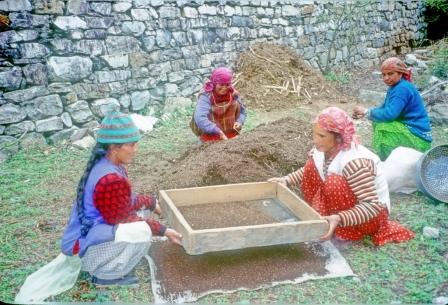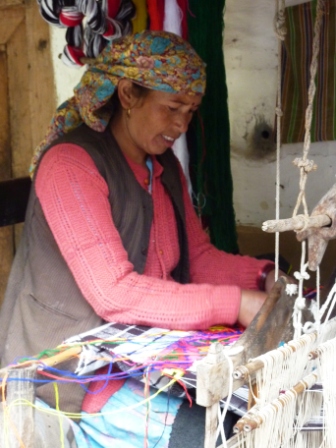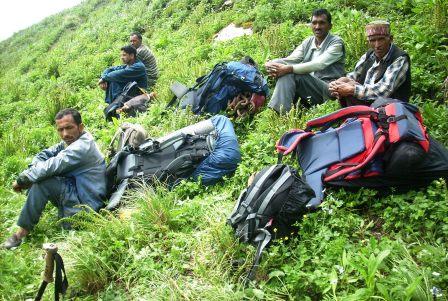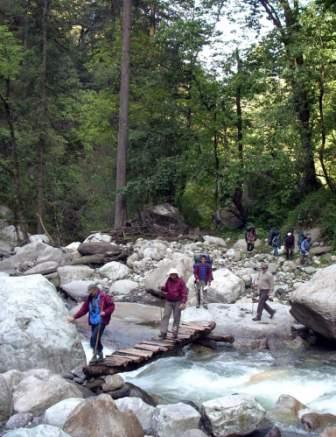Conservation
Let Conservation Pay
In India, efforts to link protected area management with local social and economic development programs are referred to as ecodevelopment. Practical steps towards developing and testing workable approaches in the field have begun only recently. The on-going challenges related to community needs and protecting an important environment require the continuous interaction between many stakeholders, including (among others): villagers, local governing bodies, government and elected officials in various departments, Forest Department officials, local NGOs, environmental organizations, tourism interests, and tourists.

The biodiversity conservation strategy at GHNPCA amply demonstrate that the planning sequence generally followed by the Protected Area (PA) management needs to be revisited with priority given to the working with local communities (their livelihoods) to reduce their dependencies on the PA’s natural resources, and then come the interventions to manage, monitor and protect the natural habitats/species and resources. Buffer zone is the key to biodiversity conservation at GHNPCA.
Let conservation “pay”. The effectiveness of the Livelihood Approach does not lie in the economic empowerment alone. It needs to incorporate a back-up of effective policy and legislation, enforcement, socio-political empowerment, conservation education programme, and collaborative management.


Ecodevelopment or Ecologically sustained Development may be defined as:
• “a site specific package of measures, developed through people’s participation, with the objective of promoting sustainable use of land and other resources, as well as farm and off farm income generating activities which are not deleterious to protected area values”;
or
• “limited rural development, designed with the participation of local people, for the purpose of reconciling genuine human needs with the specific aims of protected area management”.
Conservation Strategies
The need for environmental conservation in the Kullu Valley has very early origins. Local villagers have recognized that certain trees, groves, and forests had special attributes. These areas were always protected from exploitation. The increasing pressures of colonization in the 18th and 19th centuries for commercial exploitation of forests also raised concerns by the British that certain conservation efforts were needed. Since Indian independence (1947), environmental pressures have steadily increased in the Kullu Valley with growing population, development, and tourism.
The innovative strategy at GHNP aims at bringing about a change in the relationship between the natural resource base including the Park and the immediate and long term livelihood needs of the local communities from the present open access arrangement to an increasingly participatory mode of joint management involving all stakeholders.

The main vehicle to develop such a strategy at GHNP are the Women Saving and Credit Groups (WSCG, through a micro-credit scheme) developed among women in such households of GHNP’s Ecozone which, before creation of the Park, remained very much dependent on its natural resources such as medicinal herbs and vegetation for grazing. The Park management facilitated organisation of more than 90 WSCGs consisting of more than 900 women who saved more than Rs. 700,000 with which they could earn livelihoods worth more than Rs. 2500,000 in a period of four years.
In a small women group, the consultation among all the group members is facilitated which is the most important aspect of participatory management.


A PhD thesis by a Friend of GHNP, Sanjeeva Pandey entitled “Assessment of alternative livelihood development as a strategy for long term conservation of biodiversity at the Great Himalayan National Park, India” deals with detailed analysis of park – people interface, patterns of rural livelihoods and impact of alternative livelihoods programmes on the effectiveness of biodiversity conservation in GHNP. Specific objectives of this study were to: (i) study impact of the livelihood generation efforts made by the park management in GHNP’s ecozone, (ii) study the impact of these livelihood generation efforts on the effectiveness of biodiversity conservation of the Park, and (iii) identify the livelihood generation inputs and innovations emerging from the GHNP experience which can be pertinent for implementing at the local, regional, and national levels.
May see Full Thesis.


